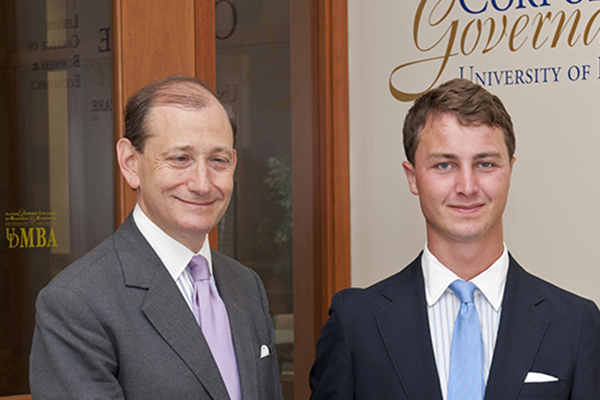
Executive pay
UD corporate governance professor, fellow issue study on executive pay
12:35 p.m., Sept. 24, 2012--An over-reliance on peer group compensation benchmarking is central to the persistent issue of rising executive pay in the United States, new research in a study co-authored by a University of Delaware professor and a corporate governance fellow, finds.
While other research examines flawed peer group methodology, this new study makes it clear that peer grouping with minimal board discretion is a seriously flawed methodology even when the peer groups are fairly constructed. The study also is the first to document that peer group benchmarking – now so widely utilized that it is enshrined in federal regulations – has accidentally become the de facto standard even though it never was designed to determine CEO compensation.
Research Stories
Chronic wounds
Prof. Heck's legacy
The report, “Executive Superstars, Peer Groups and Over-Compensation – Cause, Effect and Solution,” finds that moving to a compensation system that instead focuses on internal, company-specific metrics and benchmarks will result in a more reasoned executive compensation approach, improved board oversight, and a healthier corporation.
Authors of the study are Charles M. Elson, Edgar S. Woolard, Jr., Chair and director of the John L. Weinberg Center for Corporate Governance at UD, and Craig K. Ferrere, the Edgar S. Woolard Fellow in Corporate Governance at the Weinberg Center, and funded by the Investor Responsibility Research Center Institute (IRRCi).
The study was the subject of a story in the Sept. 22 issue of The New York Times. The full study is available at the IRRCi website.
“We find that peer group comparisons are central to the CEO ‘mega pay machine’ problem,” said Elson. “Even the best corporate boards will fail to address executive compensation concerns unless they tackle the structural bias created by external peer group benchmarking metrics. We find that boards should measure performance and determine compensation by focusing on internal metrics. For example, if customer satisfaction is deemed important to the company, then results of customer surveys should play into the compensation equation. Other internal performance metrics can include revenue growth, cash flow, and other measures of return.”
“This report is unique in that it takes a pragmatic approach to executive compensation theory, to us an understanding of executive pay should begin by looking at the peer group process,” said Ferrere. “It’s also important to note that the use of peer group analysis was never intended to be central to senior management compensation. Historically, it was designed after World War II to compare jobs such as accountants and civil engineers across companies. In hindsight, it was an easy but misguided approach that eventually led to the application of peer grouping to CEOs and senior executives.”
“These findings have profound implications for CEOs, directors, and investors,” said Jon Lukomnik, IRRCi executive director. “It indicates that corporate boards need to de-emphasize peer grouping, and increase the emphasis on their company and executive accomplishments. Companies are better served when directors use discretion – both up and down – in setting compensation structures and levels. For investors, the study reveals a need to move away from formulaic peer group analyses in judging compensation packages, and hold directors accountable for their judgements. Shifting from the peer benchmarking process certainly isn’t the total fix, but moving towards an internal metric approach has the potential to contribute to solving the compensation problems that plague many public corporations.”
The research paper argues that:
- Theories of optimal market-based contracting are misguided because they are based on the notion of vigorous, competitive markets for transferable executive talent;
- Even boards comprised of the fiduciaries faithful to shareholder interests will fail to reach an agreeable resolution to compensation when they rely on the flawed and unnecessary process of peer benchmarking;
- Systemically, a formulaic reliance on peer grouping will lead to spiraling executive compensation, even if peer groups are well constructed and comparable; and
- The solution is to avoid arbitrary application of peer group data to set executive compensation levels. Instead, compensation committees must develop internal pay standards based on the specific company, its competitive environment and its dynamics. Relevant considerations include an executive’s current and historic performance and internal pay equity. Some reference to peer groups may be warranted, but the compensation process must maintain the flexibility necessary to arrive at a reasonable approximation to what is absolutely necessary to retain and encourage talent.
This research adds to the body of executive compensation research funded by IRRCi.
Photo by Evan Krape








